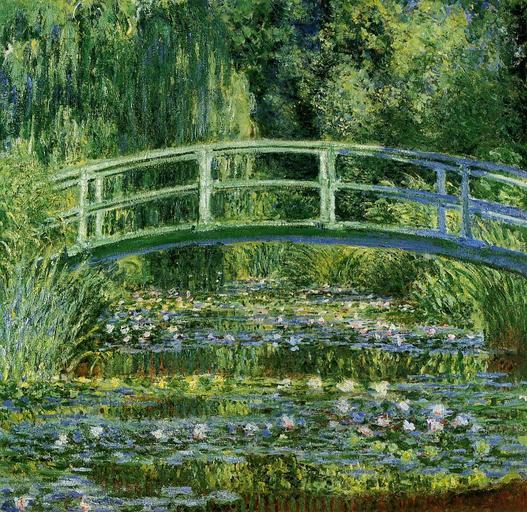MAKE A MEME
View Large Image

| View Original: | Water-Lilies-and-Japanese-Bridge-(1897-1899)-Monet.jpg (1031x1001) | |||
| Download: | Original | Medium | Small | Thumb |
| Courtesy of: | commons.wikimedia.org | More Like This | ||
| Keywords: Water-Lilies-and-Japanese-Bridge-(1897-1899)-Monet.jpg Artwork creator Claude Monet en Catalogue Entry Water Lilies and Japanese Bridge represents two of Monet ™s greatest achievements his gardens at Giverny and the paintings they inspired Monet moved to Giverny in 1883 and immediately began to develop the property For him the gardens were both a passion and a second artistic medium His Asian garden was not part of the original estate; it was located on an adjacent property with a small brook which he purchased and enlarged into a pond for a water garden in 1893 He transformed the site into an inspired vision of cool greens and calm reflective waters enhanced by exotic plants such as bamboo ginkgo and Japanese fruit trees and a Japanese footbridge It was not until 1899 however that he began a series of views of the site of which this is one A careful craftsman who reworked his canvases multiple times Monet was committed to painting directly from nature as much as possible and for as long as he had the correct conditions; thus he could work on as many as eight or more canvases a day devoting as little as an hour or less to each In this case he set up his easel at the edge of the water-lily pond and worked on several paintings of the subject as part of a single process Monet ™s gardens and paintings show the same fascination with the effects of time and weather on the landscape Both are brilliant expressions of his unique visual sensitivity and emotional response to nature At Giverny he literally shaped nature for his brush cultivating vistas to paint Gallery Label Water Lilies and Japanese Bridge represents two of Monet ™s greatest achievements his gardens at Giverny and the paintings they inspired In 1883 the artist moved to the country-town Giverny near Paris but just across the border of Normandy This was a time when he was enjoying increasing financial success as an artist and he immediately began to redesign the property In 1893 Monet purchased an adjacent tract which included a small brook and transformed the site into an Asian-inspired oasis of cool greens exotic plants and calm waters enhanced by a Japanese footbridge The serial approach embodied in this work ”one of about a dozen paintings in which Monet returned to the same view under differing weather and light conditions ”was one of his great formal innovations He was committed to painting directly from nature as much as possible and whenever weather permitted sometimes working simultaneously on eight or more canvases a day Monet ™s project to capture ever-shifting atmospheric conditions came to be a hallmark of the Impressionist style 1897 1899 oil on canvas Size cm 90 5 89 7 <br> frame Size cm 129 5 132 1 15 3 Institution Princeton University Art Museum European art Modern art accession number y1972-15 object history credit line From the Collection of William Church Osborn Class of 1883 trustee of Princeton University 1914-1951 president of the Metropolitan Museum of Art 1941-1947 ; given by his family cite book Steward James Christen Princeton University Art Museum Handbook of the Collections Revised and Expanded Edition 2013 Princeton University Art Museum Princeton NJ 978-0943012414 2nd 219 cite web Water Lilies and Japanese Bridge y1972-15 http //artmuseum princeton edu/collections/objects/31852 Princeton University Art Museum the-athenaeum org http //www the-athenaeum org/art/full php ID 3788 PD-old-auto 1926 thumb center DEFAULTSORT 1897 Monet Claude Water Lillies and Japanese Bridge Japanese footbridge by Claude Monet 1897 Images from the-athenaeum org Paintings by Claude Monet in the Princeton University Art Museum European paintings in the Princeton University Art Museum 1897 Paintings in the Princeton University Art Museum European art in the Princeton University Art Museum Modern art in the Princeton University Art Museum 1897 | ||||